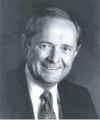
President,
Turbo Leadership
Systems©
Harness your experiences to maximize your performance
Since I was a boy in the mid 50's, I have been fascinated with the internal combustion engine. I came of age, got my driver's license at the exact time the overhead valve V-8 engine was becoming prominent. Chevrolet came out with their V-8 in 1955, and Ford countered with an overhead valve engine in '54. The '55 Chevy V-8 generated 162 horsepower compared to the inline 6 one year earlier, the '54 Chevy that generated 115 horsepower. What a time! We all knew "there is no substitute for cubic engines." These were the days when we measured an engine by its cubic inches, not by its' liters or cc's (cubic centimeters). Then I began to learn about the super charger and the turbocharger. The high performing engines on dragsters and at Indianapolis Speedway were turbo charged. The very first turbochargers were used on fighter aircraft in the 1930's to gain more altitude. Then in the 70's, when the demand for economical cars with high performance came along, the turbocharger was reborn.
How does a turbocharger work? The turbocharger was invented by Swiss engineer Alfred Büchi in 1905. In 1918, General Electric engineer Sanford Moss attached a turbo to a V12 Liberty aircraft engine. The engine was tested at Pikes Peak in Colorado at 14,000 feet to demonstrate that it could eliminate the power losses usually experienced in internal combustion engines as a result of reduced air pressure and density at high altitudes.
A turbocharger uses the exhaust, which is normally thought of as useless, to drive a turbine to draw in pre-compressed fresh air into the engine's combustion chambers.
This pre-compressed fresh air is used to enhance the performance of your engine by as much as 50% with no additional cubic inches.
So the secret to turbo charging your sales and improving the performance of your operation is learning to learn from and harness the knowledge gained from your past performance and experiences. Compress your experiences and use them as a source of empowerment. There are six elements or aspects of your sales process that we will learn from, and we will explore all six elements as this work unfolds.
|
WORKSHOP How To Turbo Charge Your Team Your team is introduced to the extraordinary power of synergy, and the specific strategies which create genuine teamwork. The results of your leaders working as a committed team are: increased productivity; stronger morale; lower turnover; reduced costs; more harmonious relationships; and improved customer service.
|

